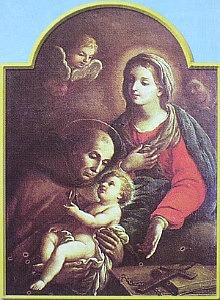
TOPICS:
Saint John Joseph of the Cross
Jun 30, 2015 / Written by: America Needs Fatima
Feast March 5
On August 15, 1654 on the island of Ischia, off the coast of Naples, a little boy was born to an exemplary, well-to-do couple, Joseph and Laura Calosirto. Baptized the same day, the new arrival was given the name of Carlo Caetano.
One of seven boys, five of which were to enter religion, Carlo gave early signs of seeking sanctity, which his family recognized and respected.
At sixteen Carlo had a talk with the superior of the Franciscan Monastery of Santa Lucia del Monte in Naples. Discerning a great vocation, the superior received him despite his youth. The new novice did not disappoint his superiors to the point that at age twenty-one, and not yet a priest, he was appointed superior of a new monastery in Piedmont.

Though he wished to remain a deacon like his founder, St. Francis of Assisi, his superiors insisted that he be ordained, and so he was in 1677. Despite his youth and innocence he proved to be an exceptional, insightful confessor.
Fr. John Joseph spent his life in the service of his order at times as superior, at times as novice master, always a loving, balanced and wise director of souls.
At one period of great aridity in his life he was consoled by a vision of a departed brother who reassured him as to his condition. After this incident, Fr. John Joseph began to demonstrate the powers of a wonder worker, with miraculous cures and the multiplication of food for the house.
His fame spread so quickly that when he returned to Ischia to visit his dying mother, his town acclaimed him as a saint.
In 1722, Fr. John Joseph was the wise and tactful arbiter in a great conflict that arose regarding the management of his order.
Warned of his death, he talked freely of it to those about him but continued to carry out his duties. On March 1, 1734 he had an apoplectic seizure and died five days later. Almost immediately his tomb became a place of pilgrimage. He was canonized in 1839.
